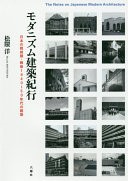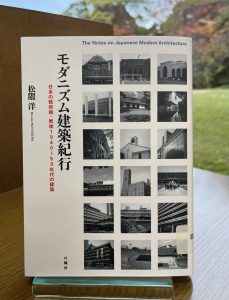
Through visits to renowned examples of modernist architecture in locations around Japan, the author examines how the culture of modernism, which had a direct bearing on shaping the country’s modern landscape, developed during the 1940s and 1950s. He draws insights from the words left by the designers to identify the various social issues prevailing at the time and the ways in which the buildings attempted to address them.
Matsukuma notes that the International House of Japan represents a “distinctive, harmonious, and beautiful expression of the Japanese style,” built with new materials whose restrictions on use were lifted in 1950. This was made possible by the concerted efforts of architects Kunio Maekawa, Junzo Sakakura, and Junzo Yoshimura, who had all studied modernism during the prewar period.
Given that many modernist landmarks have been dismantled in recent years or completely rebuilt while preserving only the original façade, the author is moved to comment on the significance of the fact that I-House still stands intact today, thanks to the efforts of those who advocated strongly for its preservation. While the book was published when the building was around 60 years old, the weight of such words has only grown as I-House celebrates the 70th anniversary of its founding this year.

Nippon no senzenki, sengo 1940–50 nendai no kenchiku
(Notes on Japanese Modern Architecture)
MATSUKUMA Hiroshi. Rikuyosha, 2016
[日本語棚||500]
Publisher description:
http://www.rikuyosha.co.jp/products/detail4462/
- Period: Thursday, December 1 – Wednesday, December 28, 2022
- Place: The Library, International House of Japan